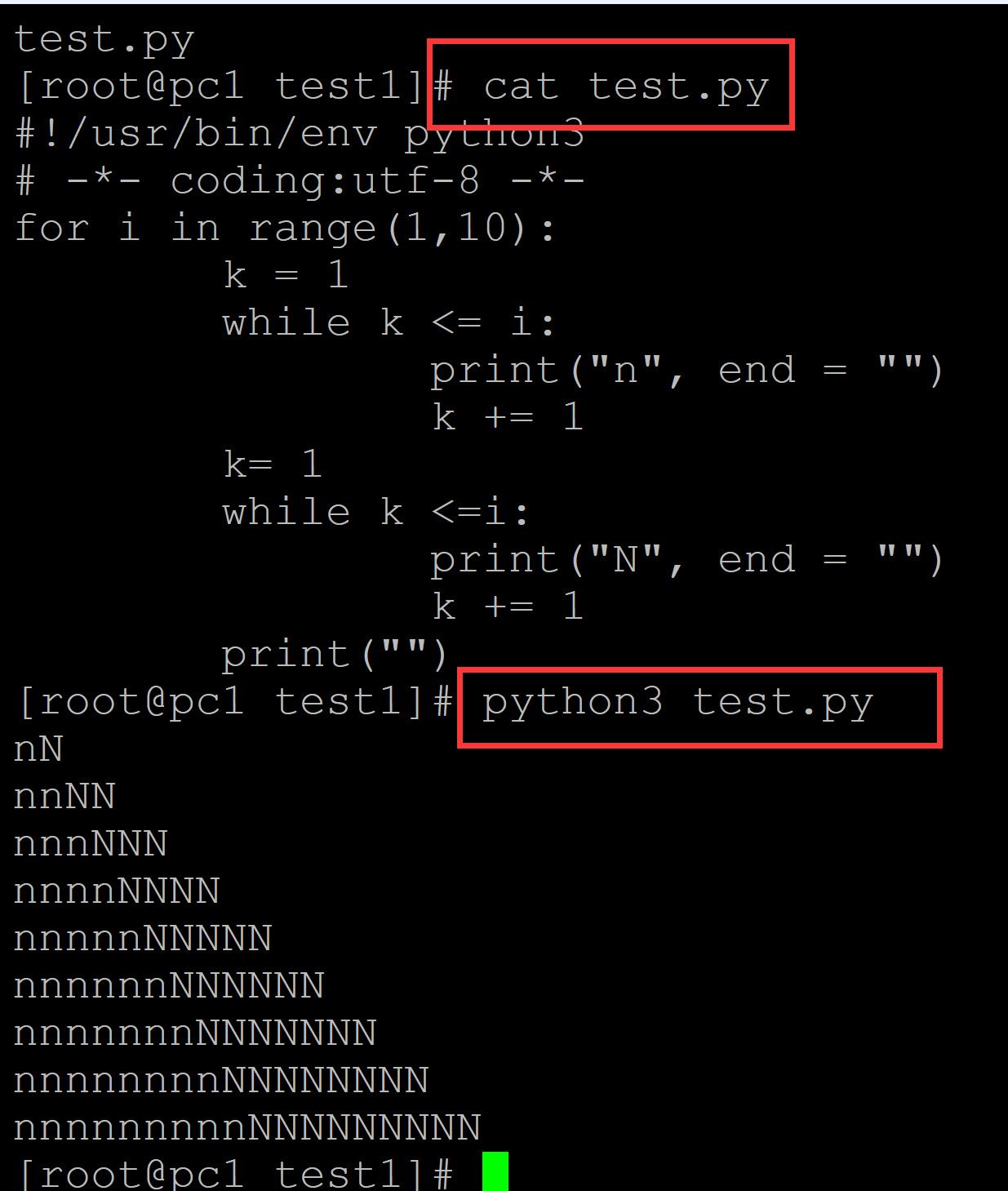python生信01
001、生成
nN
nnNN
nnnNNN
....
a、
[root@pc1 test1]# ls test.py [root@pc1 test1]# cat test.py ## 测试程序 #!/usr/bin/env python3 # -*- coding: utf-8 -*- for i in range(1,11): for j in range(1,i): print("n", end = "") for k in range(1,i): print("N", end = "") print("") [root@pc1 test1]# python3 test.py ## 执行程序 nN nnNN nnnNNN nnnnNNNN nnnnnNNNNN nnnnnnNNNNNN nnnnnnnNNNNNNN nnnnnnnnNNNNNNNN nnnnnnnnnNNNNNNNNN

b、
[root@pc1 test1]# ls test.py [root@pc1 test1]# cat test.py ### 程序 #!/usr/bin/env python3 # -*- coding:utf-8 -*- for i in range(1,10): k = 1 while k <= i: print("n", end = "") k += 1 k= 1 while k <=i: print("N", end = "") k += 1 print("") [root@pc1 test1]# python3 test.py ## 运行程序 nN nnNN nnnNNN nnnnNNNN nnnnnNNNNN nnnnnnNNNNNN nnnnnnnNNNNNNN nnnnnnnnNNNNNNNN nnnnnnnnnNNNNNNNNN

002、计算3bp组合的频率
a、
[root@pc1 test1]# ls test.py [root@pc1 test1]# cat test.py ## 测试程序 #!/usr/bin/env python3 # -*- coding: utf-8 -*- dna="CTCCTGAACAACCCCACTGTACTTCCC" ## 测试序列 dict1 = dict() while len(dna) >= 3: codon = dna[:3] if codon in dict1: dict1[codon] += 1 else: dict1[codon] = 1 dna = dna[1:] for i,j in dict1.items(): print(i, j) [root@pc1 test1]# python3 test.py | head -n 5 ## 运算结果 CTC 1 TCC 2 CCT 1 CTG 2 TGA 1

b、
参考:https://blog.csdn.net/m0_57099761/article/details/123464340






【推荐】国内首个AI IDE,深度理解中文开发场景,立即下载体验Trae
【推荐】编程新体验,更懂你的AI,立即体验豆包MarsCode编程助手
【推荐】抖音旗下AI助手豆包,你的智能百科全书,全免费不限次数
【推荐】轻量又高性能的 SSH 工具 IShell:AI 加持,快人一步
· 震惊!C++程序真的从main开始吗?99%的程序员都答错了
· 【硬核科普】Trae如何「偷看」你的代码?零基础破解AI编程运行原理
· 单元测试从入门到精通
· 上周热点回顾(3.3-3.9)
· winform 绘制太阳,地球,月球 运作规律
2022-09-28 linux 中shell脚本实现将fasta文件的scaffold拆分为单独的文件
2022-09-28 is not in the sudoers file. This incident will be reported.
2021-09-28 -bash: /usr/local/bin/rar: /lib/ld-linux.so.2: bad ELF interpreter: No such file or directory
2020-09-28 linux系统中split命令
2020-09-28 R语言中创建数据框、数据框的常规操作